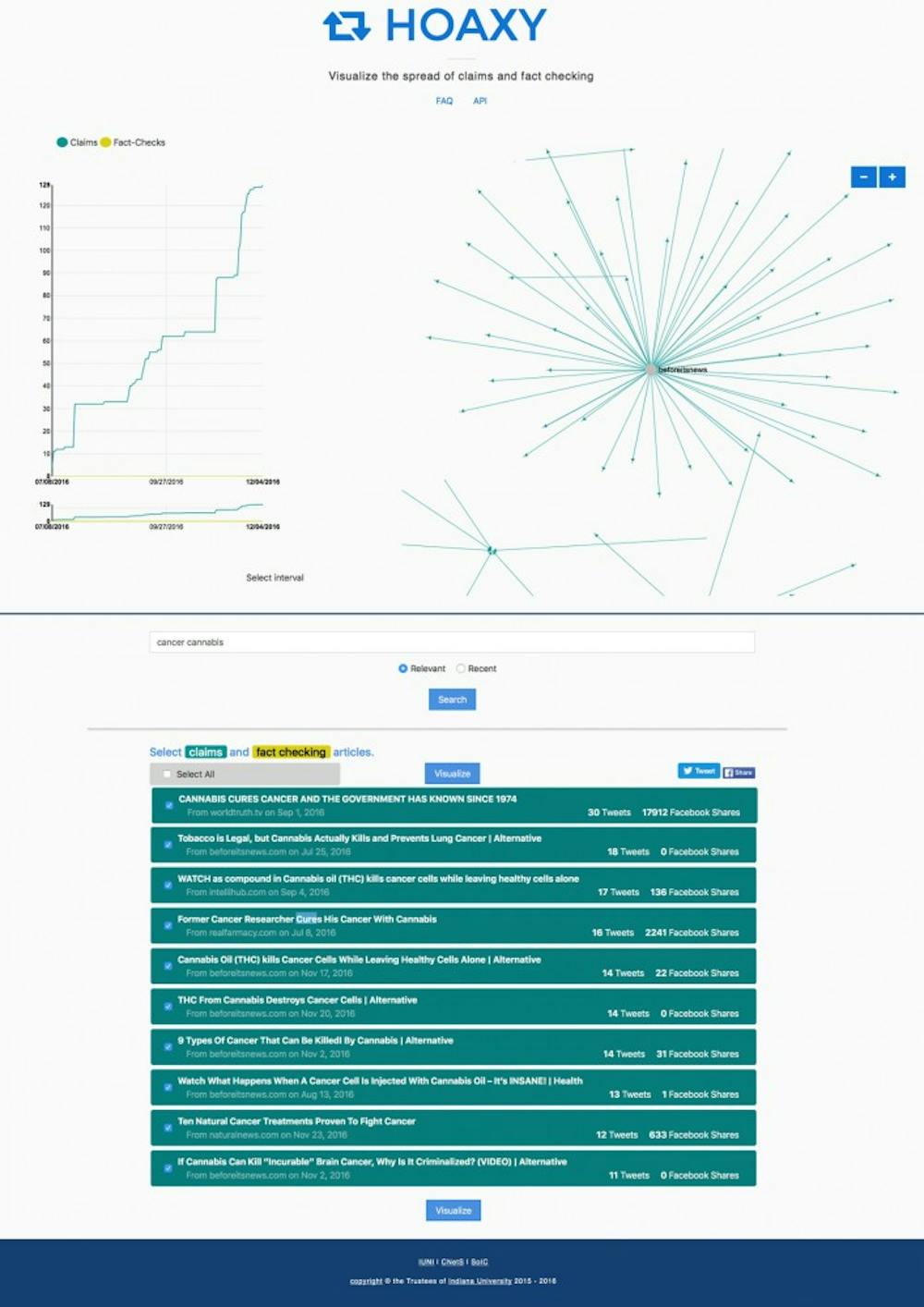Fake news has emerged as a growing issue in the U.S., and researchers at IU have developed a new tool to understand how it spreads online.
The tool, called Hoaxy, creates visualizations of how stories spread through social networking sites like Facebook and Twitter, according to an IU press release.
The tool was developed by the Observatory on Social Media at IU and by Filippo Menczer, a professor at IU's School of Informatics and Computing.
"In the past year, the influence of fake news in the U.S. has grown from a niche concern to a phenomenon with the power to sway public opinion," Menczer said in the release.
Giovanni Ciampaglia, a research scientist at IU Network Science Institute, helped coordinate the Hoaxy project with Menczer and several graduate students. Ciampaglia said Hoaxy will illustrate how a story spreads by analyzing diffusion patterns in data.
Hoaxy is a move to understand and limit the spread of fake news which can at times cause hysteria.
"We've now even seen examples of fake news inspiring real-life danger, such as the gunman who fired shots in a Washington, D.C. pizza parlor in response to false claims of child trafficking," Menczer said.
Hoaxy also attempts to fact check different stories through independent fact-checkers like snopes.com and politifact.com. Menczer said Hoaxy does not itself determine the truth of stories, it only shows the trends around the story.
"Importantly, we do not decide what is true or false," Menczer said in the press release. "Hoaxy is a tool to observe how unverified stories and the fact-checking of those stories spread on public social media."
Currently, Hoaxy is only working on Twitter and only public tweets can appear in Hoaxy visualizations, according to the press release.
“If we want to stop the growing influence of fake news in our society, first we need to understand the mechanisms behind how it spreads,” Menczer said in the press release.
Dominick Jean




